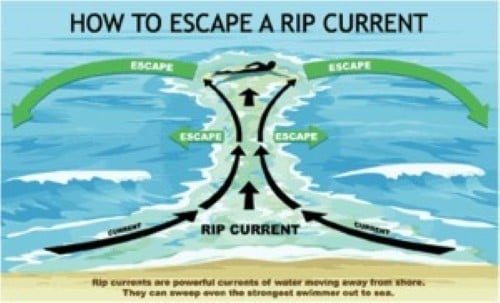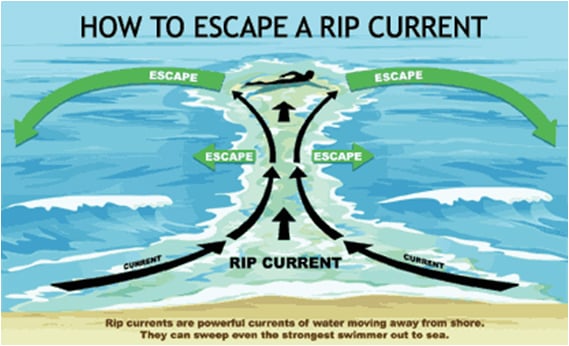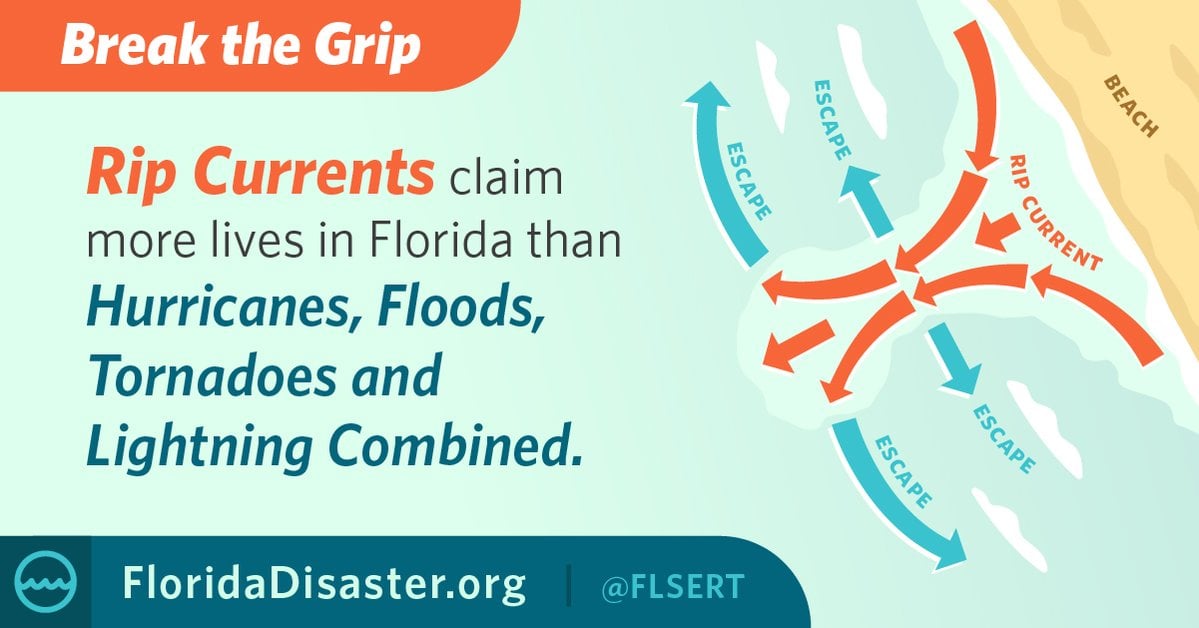Marine Hazards
With well over 2000 miles of coastline, marine hazards are an everyday threat in Florida. Large waves, thunderstorm winds, lightning, waterspouts, and rip currents are just some of the hazards that can impact marine conditions across Florida's waterways.
Visit maps.floridadisaster.org/ripcurrents for current rip current risks.
A rip current is a strong channel of water moving away from the shore. Rip currents typically form along the beach at breaks in the offshore underwater sandbar, but they can also form near structures such as jetties and piers. Rip currents are a common part of the natural near-shore ocean circulation, and occur at many Florida beaches every day. Surprisingly, rip currents kill more people in Florida during an average year than hurricanes, tornadoes and lightning combined.
When at the beach:
- Whenever possible, swim at a lifeguard-protected beach.
- Be cautious at all times, especially when swimming at unguarded beaches
- Pay attention to beach warning flags and know what the colors mean.
- Obey all instructions and orders from lifeguards. Lifeguards are trained to identify hazards. Ask a lifeguard about the conditions before entering the water. This is part of their job.
- Learn how to swim in the surf. It is not the same as swimming in a pool or lake. NEVER SWIM ALONE!
- Stay at least 100 feet away from piers and jetties. Permanent rip currents often exist alongside these structures.
If caught in a rip current:
- Remain calm to conserve energy and think clearly. Never fight against the current.
- Think of a rip current like a treadmill that cannot be turned off, which you need to step to the side of.
- Swim out of the current in a direction following the shoreline. When out of the current, swim at an angle--away from the current--towards shore.
- If you are unable to swim out of the rip current, float or calmly tread water. When out of the current, swim towards shore.
- If you are still unable to reach shore, draw attention to yourself by waving your arm and yelling for help.

If you see someone in trouble, don't become a victim too:
- Get help from a lifeguard.
- If a lifeguard is not available, have someone call 9-1-1.
- Throw the rip current victim something that floats--a lifejacket, a cooler, an inflatable ball.
- Yell instructions on how to escape.
- Remember, many people drown while trying to save someone else from a rip current.
Follow safe boating practices:
- Have a VHF Marine Band Radio and NOAA All-Hazards Weather Radio on board. Check the marine forecast well ahead of time.
- Know the limitations of your boat. If small craft advisories or gale warnings are issued, you should postpone travel.
- Be sure everyone aboard is wearing a life jacket. File a float plan at your marina.
- Thunderstorms and weather-related hazards form quickly. Never let these storms cut off your route back to land.

Beachgoers who want to learn more about rip currents and see the latest forecast can visit www.ripcurrents.noaa.gov.
Beachgoers may also visit maps.floridadisaster.org/ripcurrents for currrent conditions.
Boaters can go to www.nws.noaa.gov/om/marine to check the current marine conditions and updated forecasts.


